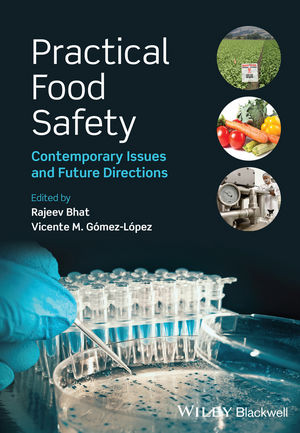Dear Supplier, You Must Be Certified; Resistance Is Futile

“But I don’t understand. We’ve been your trusted supplier of baked goods for 25 years and now you’re telling us we need to be GFSI certified or else you are going to drop us as a supplier? Can’t we talk about this? What do you mean this is nonnegotiable? You don’t care which GFSI program we go for? Well that’s helpful. OK. We’ll get on it. Thanks for your continued business.” Click. Brian puts down the phone and calls the quality assurance director into his office.
“Shawn, that was Susan, the brand director from Kreeeger’s. She said this third-party inspection thing we’ve been doing for years is no longer going to cut it. She’s given us until the end of the year to be certified against this GFSI-thingie, whatever it is. She said to pick one and go. Make it happen. Oh, and don’t spend too much money on it.”
“Brian, I’ve been telling you the industry has been moving in this direction for years and you haven’t wanted to listen. Now we have just a few months to make this happen. Kreeeger’s is just the latest and most vocal customer asking for this—we’ve had several retailers ask us to do GFSI and you’ve managed to put them off. I am going to need your full support on this. This is serious stuff. It is going to mean big changes around here.”
And with a flick of the wrist, Brian replies, “Make it so.”
And so it starts, Shawn’s journey into implementing a Global Food Safety Initiative (GFSI)-recognized food safety management system (FSMS, or scheme) into their private-label bakery operation to satisfy customer demand. But what does this mean and which one should Shawn choose?
What Is GFSI?
GFSI is an industry-driven global collaborative platform to advance food safety worldwide. It consists of a multinational group of passionate food safety experts representing retail, manufacturing and foodservice companies, as well as experts from international organizations, governments, academia and service providers to the food industry. These professionals are looking to improve the safety of every link in the whole of the food supply chain, around the world, regardless of the size of the operation.
One of the tools it uses to achieve this mission is the benchmark and recognition process for FSMSs. The organization measures these systems against criteria developed by multiple stakeholder groups set forth in the GFSI Guidance Document. The criteria address minimum requirements for an FSMS. In addition, the guidance document describes the requirements for the overall management of the scheme, including the certification audit and certification process. Schemes that meet these requirements through the benchmark process are officially known as “GFSI-recognized.” These schemes are posted on the GFSI website (see “Useful Web Links”).
What Are the FSMS Choices?
There are currently four GFSI-recognized management systems that apply to the scope of Shawn’s food manufacturing operation:
1. British Retail Consortium Global Standard for Food Safety (BRC Food)
2. Food Safety Systems Certification (FSSC) 22000 (This is the ISO 22000-based FSMS.)
3. International Featured Standard for Food Safety (IFS Food)
4. Safe, Quality Food (SQF)
Because they are all GFSI-recognized, Shawn can take comfort in knowing they all meet the same basic FSMS requirements.
From a food safety perspective, all schemes require certified sites to do the following:
• Meet regulatory requirements for the country of manufacture and destination
• Follow specific Good Manufacturing Practices (GMPs) and incorporate Hazard Analysis and Critical Control Points (HACCP) to manage the food safety hazards associated with the product and process
• Ensure a management system perspective on commitment and support, and the implementation and maintenance of disciplined processes
These processes are designed to enhance the businesses’ ability to proactively manage internal and external risks, control their operations and create repeatable and efficient processes that can be used to enhance staff competency.
The audit schemes also enable sites to demonstrate the controls for food safety are in place. This further demonstrates that the FSMS is effective (validation) and is being followed (verified) consistently.
 All audit schemes require an initial certification and ongoing recertification, including annual site audits at a minimum. Differences between the four lie primarily in structure, philosophy and the extra benefits the standard owner adds to sweeten the deal (Table 1).
All audit schemes require an initial certification and ongoing recertification, including annual site audits at a minimum. Differences between the four lie primarily in structure, philosophy and the extra benefits the standard owner adds to sweeten the deal (Table 1).
Ultimately, Shawn must choose which scheme best fits his business and should be asking some critical questions:
Do I have a customer mandate for one specific scheme?
Even though “once certified, recognized everywhere” is the philosophy of the GFSI stakeholders, some stakeholders prefer one scheme over another for various reasons. It may be their own manufacturing plants have implemented a scheme successfully or they wish to have full visibility (and reporting) to their suppliers through the scheme owner’s database.
However, if Shawn does not want to choose the “mandated” audit scheme, he should ask the customer’s professional who is responsible for managing the requirement for the certification of the FSMS, “Are you actually specifying a specific GFSI audit scheme, or will you accept any of the applicable GFSI audit schemes?” Many times, the response will come back, “Any applicable GFSI audit scheme.”
Does my primary destination market support one specific scheme?
These schemes were developed and evolved in different parts of the world, and thus there are geographies that favor one over another. Customers may thus be more comfortable with the homegrown scheme rather than the new scheme. The availability of services for implementation support and certification audits may differ depending on which scheme is strongest in which country.
Where is my starting point in implementing a GFSI audit scheme?
Most facilities that have been undergoing regular third-party inspections from a reputable inspection body will very likely have approximately 65 percent of the requirements they need to implement in place already, as many of these address GMP requirements, inspections and HACCP. What most of these facilities lack are the management system principles (the discipline) and many of the validation and verification requirements.
What literature is available to help in the implementation and audit process?
Over the last several years, there has been an increase in the literature related to GFSI audit schemes. Some literature addresses specific schemes, whereas some is more general. The guidance documents differ in their content. The BRC guidance standard provides interpretation guidance on the BRC Food Safety Standard. Likewise, ISO 22004 provides interpretation guidance on ISO 22000. SQF has taken another approach. Its document provides both implementation guidance for the organization and auditing guidance for auditors.
 Several books have been published that can be used in understanding, implementing and auditing the standards. Table 2 provides a list of some available guidance documents and books.
Several books have been published that can be used in understanding, implementing and auditing the standards. Table 2 provides a list of some available guidance documents and books.
Conclusions
So what is the best GFSI audit scheme? We will answer the question in the following way: “It depends.”
You need to select the audit scheme that best meets your company’s needs. The first step is to determine the best audit scheme for your site. So a SWOT (strengths, weaknesses, opportunities and threats) analysis should be done on the site’s food safety and quality systems. Research the GFSI audit schemes. Develop a basic understanding of the recognized audit schemes. Read the standards and guidance documents. Talk with individuals who have direct experience in implementing the different audit schemes. Then, after assessing and comparing the results with the SWOT analysis, select the best audit scheme for you. It should be noted that all four audit schemes require the site to commit to actively manage an FSMS. A GFSI audit scheme is not about having a certificate that is ignored once the auditors close out the audit report. We have seen numerous incidents result from this problem, and all incidents have led to the withdrawal of the certification.
The authors would like to wish you well in the implementation of the best GFSI audit scheme for your needs.
Tatiana A. Lorca, Ph.D., works for an international provider of food safety solutions, including training and consulting for the food industry.
John G. Surak, Ph.D., provides consulting on food safety and quality management systems, auditing and validating manufacturing processes. His website is www.stratecon-intl.com/jsurak.html. He can be reached at jgsurak@yahoo.com.
Useful Web Links
• www.brcglobalstandards.com/
• www.fssc22000.com/
• www.mygfsi.com
• www.iso.org
• www.ifs-certification.com
• www.sqfi.com/
Looking for a reprint of this article?
From high-res PDFs to custom plaques, order your copy today!








